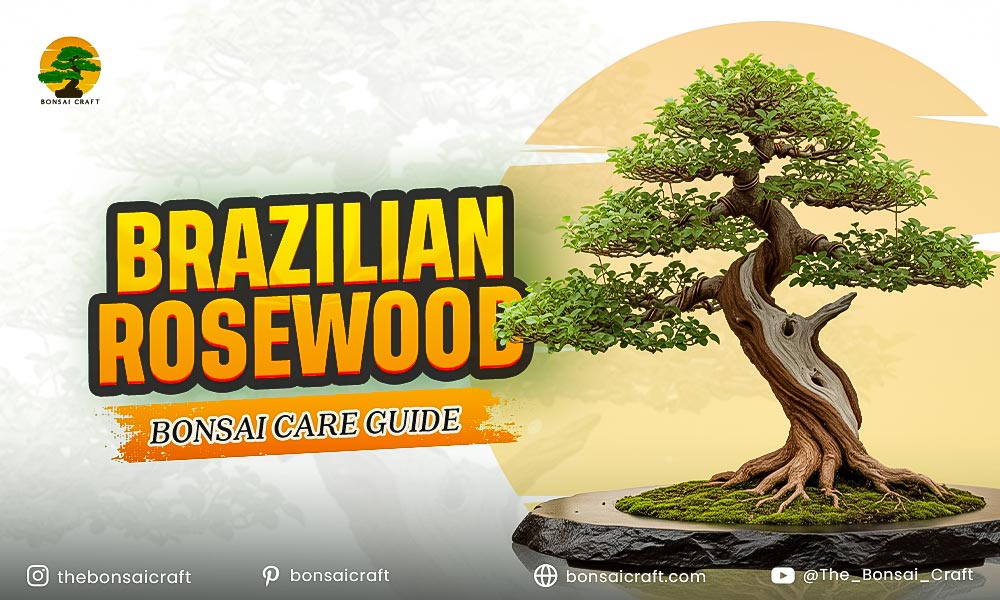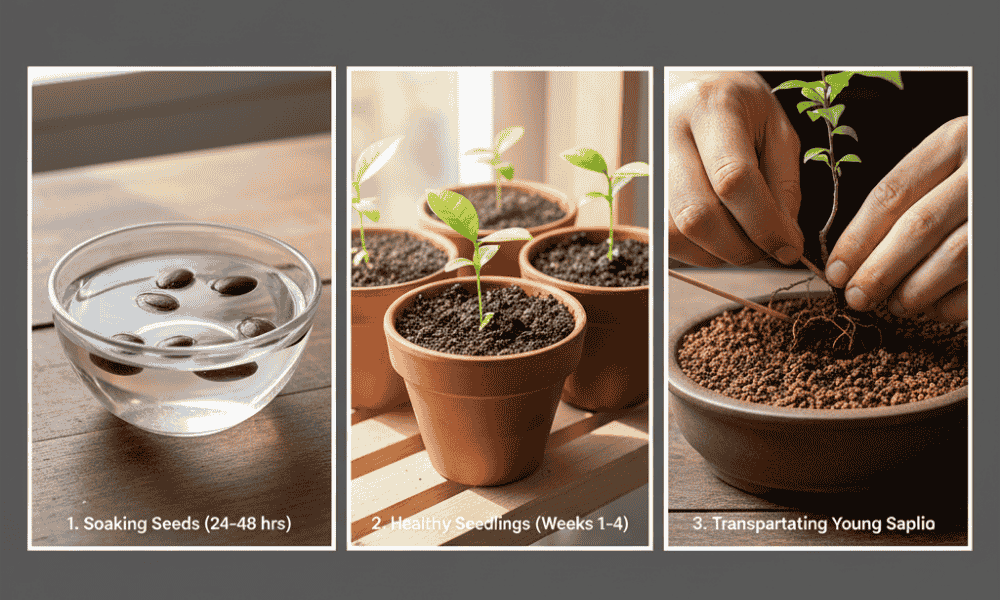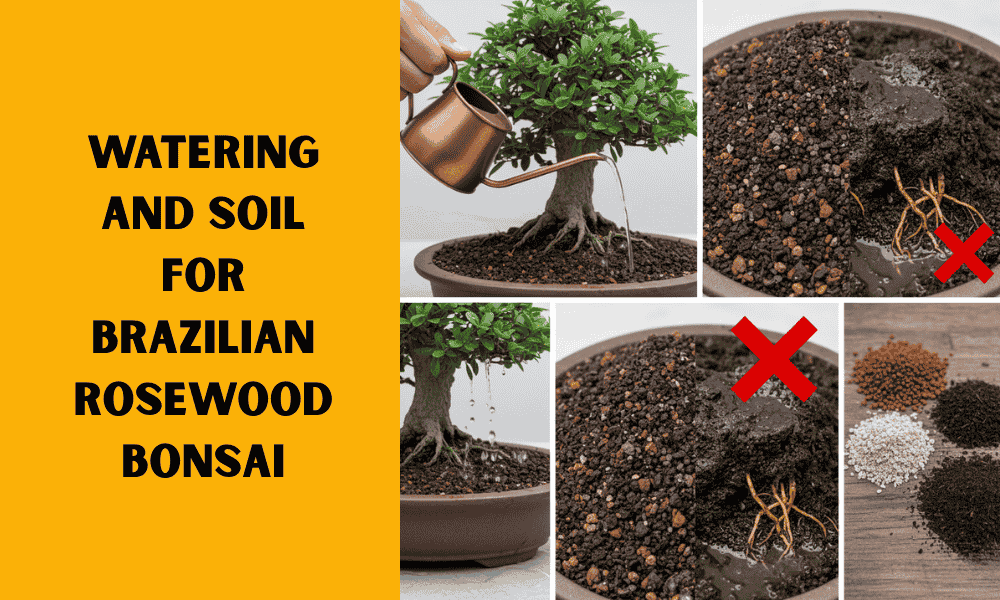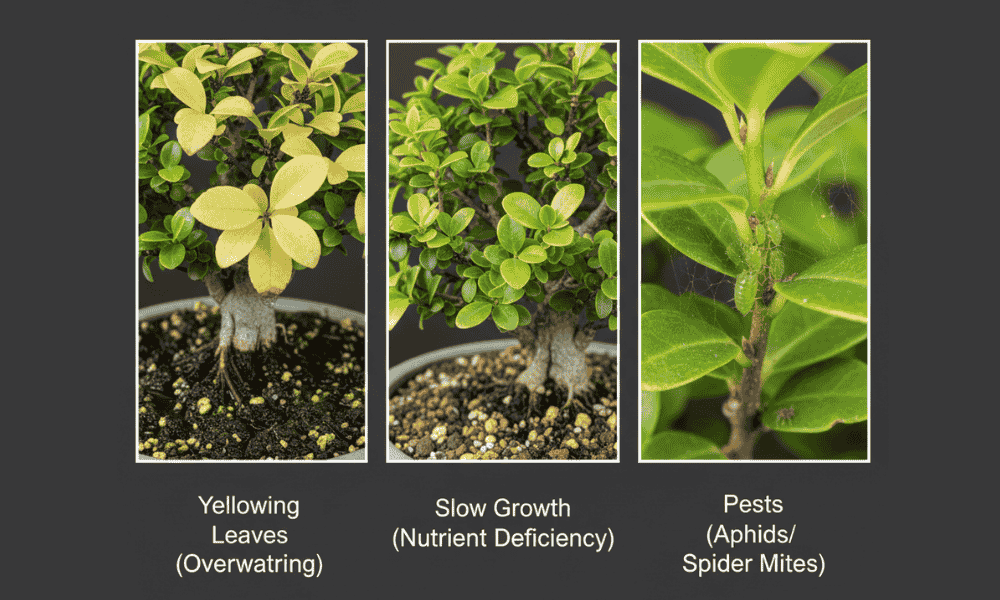
The Brazilian Rosewood Bonsai (Dalbergia nigra) is admired for its rich, dark wood, glossy leaves, and elegant growth habit. Though Brazilian Rosewood is globally renowned as a timber tree, cultivating it as a bonsai tree offers an ethical and artistic way to enjoy its beauty. This species, when trained properly, becomes a living sculpture that reflects patience, skill, and nature’s resilience.
In this evergreen guide, we’ll explore Brazilian Rosewood bonsai care, how to start from Brazilian Rosewood seeds, the ideal soil and watering techniques, pruning methods, and growth rate expectations. As someone with experience in bonsai cultivation and research, I’ll provide practical tips, trusted insights, and expert-backed strategies so you can confidently grow and maintain a Brazilian Rosewood bonsai tree for years to come.
Understanding the Brazilian Rosewood Bonsai Tree
The Brazilian Rosewood is a tropical hardwood species native to the Atlantic forests of Brazil. While it is endangered in the wild, cultivated bonsai grown from seeds are a sustainable way to appreciate its natural charm.
Key characteristics:
- Leaves: Glossy, compound leaves that resemble fine rose foliage.
- Bark: Smooth when young, becoming darker and textured as it matures.
- Growth rate: Moderate to fast, making it rewarding for bonsai training.
- Form: Naturally upright with graceful branching.
Because of its adaptability, rosewood bonsai can be styled in formal upright, informal upright, or broom style.

How to Grow Brazilian Rosewood Bonsai from Seed
To grow a Brazilian Rosewood bonsai from seed, soak the seeds in warm water for 24 hours, plant them in well-draining soil, and keep them in a warm, humid environment. Germination typically occurs within 2–4 weeks. With regular care, seedlings can be shaped into bonsai within 2–3 years.
- Seed Preparation: Purchase ethically sourced Brazilian Rosewood seeds from a trusted supplier. Soak them in lukewarm water overnight to soften the seed coat.
- Sowing: Plant seeds in a shallow bonsai tray with a sandy, well-draining mix. Cover lightly with soil.
- Germination: Maintain temperatures between 22–28°C (72–82°F) with consistent moisture. Sprouting generally occurs within a month.
- Seedling Care: Place seedlings under bright, indirect light. Thin out weak ones and allow the strongest to develop.
- Early Training: Begin light wiring or pruning once the seedlings are 12–18 months old.
Growing Brazilian Rosewood bonsai from seed provides full control over shaping and ensures a healthier, longer-lived tree compared to collected specimens.
Brazilian Rosewood Bonsai Growth Rate
The Brazilian Rosewood bonsai growth rate is moderate to fast under the right conditions. In warm climates with proper watering and feeding, it can produce several flushes of new growth each year. This makes it easier to thicken the trunk and refine branch structures in less time compared to slower species like pines or junipers.

Light and Temperature Needs
- Light: Full sun to partial shade. Outdoors is ideal, but indoor cultivation near south-facing windows or under grow lights also works.
- Temperature: Thrives in warm climates (18–30°C / 64–86°F). Protect from frost, as it is sensitive to cold temperatures below 10°C (50°F).
If growing in cooler regions, keep your bonsai tree in winter indoors with supplemental lighting.

Watering and Soil for Brazilian Rosewood Bonsai
Use a well-draining bonsai soil mix with akadama, pumice, and organic compost. Water when the top layer of soil begins to dry, but avoid letting the roots sit in water to prevent rot.
- Soil: The best soil for Brazilian Rosewood bonsai includes a mix of akadama, pumice, and compost at a 2:1:1 ratio.
- Watering: Keep soil slightly moist. During summer, water daily; in cooler months, reduce frequency.
- Humidity: Maintain moderate humidity, especially for indoor growth, using trays or misting.
How to Prune and Shape Brazilian Rosewood Bonsai
Prune Brazilian Rosewood bonsai during the growing season to maintain shape, encourage ramification, and improve leaf density. Pinch back new shoots regularly and perform structural pruning in late spring.
- Pinching: Pinch back young shoots when they develop 4–6 leaves, leaving 2–3 for growth balance.
- Structural Pruning: Remove unwanted branches in spring to shape the tree.
- Defoliation: Partial defoliation can reduce leaf size and improve ramification.
- Wiring: Wire young branches during active growth, but monitor to prevent scarring.
Fertilizing Brazilian Rosewood Bonsai
- Frequency: Every 2 weeks during spring and summer, monthly in autumn, and reduced in winter.
- Type: Balanced bonsai fertilizer (NPK 10-10-10) for growth; low-nitrogen fertilizer for refinement.

Repotting Brazilian Rosewood Bonsai
- When: Every 2–3 years in early spring before vigorous growth starts.
- How: Trim roots carefully, retaining fine feeder roots. Replant in fresh bonsai soil mix.
- Aftercare: Water thoroughly and keep in a shaded spot for 1–2 weeks to recover.

Common Problems and Solutions
- Yellowing Leaves → Overwatering or poor soil drainage.
- Slow Growth → Insufficient sunlight or nutrients.
- Pest Issues → Aphids and spider mites; treat with neem oil or bonsai-safe insecticides.
Conclusion
Cultivating a Brazilian Rosewood bonsai tree is a deeply rewarding journey that combines art, patience, and horticultural knowledge. By starting from Brazilian Rosewood seeds, providing the right soil, pruning carefully, and maintaining proper light and water, you can create a living masterpiece that lasts for decades.
As an expert tip: Focus on root health above all else. A strong root system ensures vibrant foliage, refined branching, and resilience in your rosewood bonsai. With time, care, and dedication, your Brazilian Rosewood bonsai will thrive as both a natural beauty and a personal achievement.
FAQs
Can you grow a Brazilian Rosewood bonsai from seed?
Yes, Brazilian Rosewood bonsai from seed is possible by soaking seeds, planting in well-draining soil, and keeping them warm and humid. With care, seedlings can be trained into bonsai within a few years.
How fast does a Brazilian Rosewood bonsai grow?
The Brazilian Rosewood bonsai growth rate is moderate to fast, with multiple growth flushes each year in warm climates. Proper feeding and pruning enhance development.
What is the best soil for Brazilian Rosewood bonsai?
A mix of akadama, pumice, and compost ensures proper drainage, root aeration, and nutrient balance for healthy growth.
How do you prune a Brazilian Rosewood bonsai tree?
Prune during the growing season by pinching new shoots and shaping branches. Structural pruning is best in spring, while regular trimming maintains balance and leaf density.
Can Brazilian Rosewood bonsai be grown indoors?
Yes, it can grow indoors with bright light, proper humidity, and regular care. Use grow lights if natural sunlight is insufficient.
